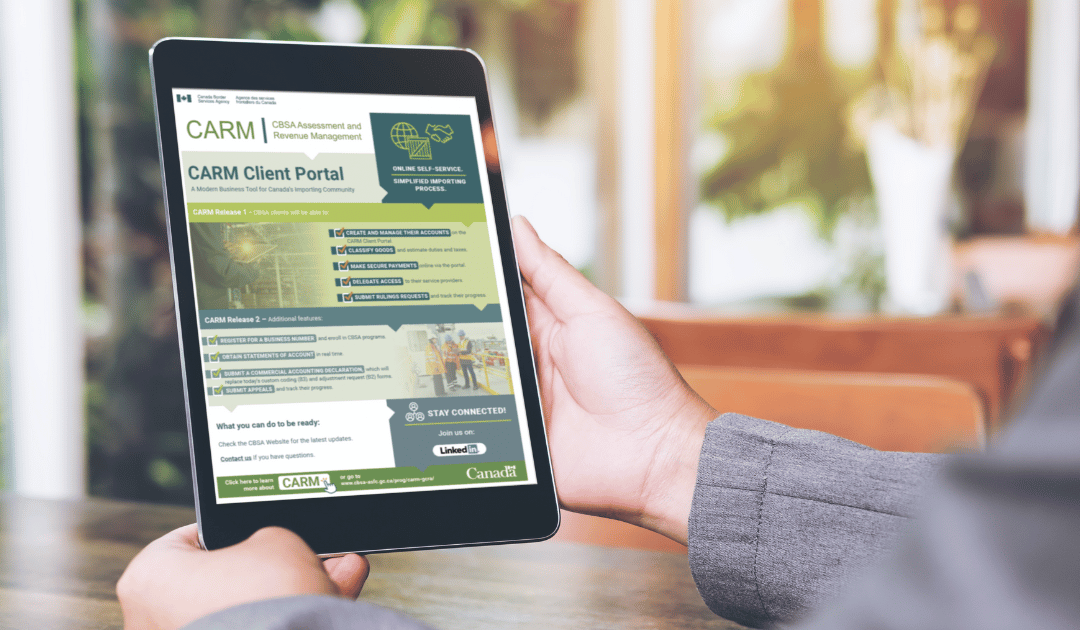In the midst of the holiday season, we know that expectations are high for growth and sales as the year comes to a close. A crucial part of that growth? Creating a great experience for your international customers. For brands looking to expand internationally, the first and easiest target for US e-tailers is Canada.
Your friends at Passport have compiled a quick resource for you and your team to help create a great customer experience that turns your Canadian clients into repeat customers. We’ll cover the 8 most important elements of creating a great customer experience:
- Tell customers exactly what they’ll pay
- Avoid customs holds and delays
- Ensure new products are admissible
- Overcommunicate to your customers
- Be mindful of cutoff dates and shipping options
- Add a sustainable shipping option
- Proactively resolve problems
- Offer flexible returns and exchanges
1. Tell customers exactly what they’ll pay
Setting a great customer experience starts with showing customers exactly how much they’ll be paying.
When you don’t include duties and taxes into the checkout process, the carrier shows up at your customer’s door with a bill for duties, taxes, and brokerage fees. (Pro tip: Brokerage fees from legacy carriers like UPS and DHL can sometimes exceed the cost of shipping.)
And when that order is purchased for someone else, the carrier shows up at the recipient’s door with two surprises – a gift and a bill. To avoid irate “I didn’t order this” calls and rejected or returned orders, it’s always best to include all duties, taxes, and fees when the customer places the order so that packages can be delivered without issues or surprises.
2. Avoid customs holds and delays
Don’t give customs and tax agencies a reason to take a closer look at your shipment. Even if everything is accurate, Canada Border Services Agency (CBSA) conducts random compliance checks, as well as targeted monitoring of commodities that they identify as higher risk for compliance violations. Fortunately, many customs holds can be avoided with these best practices:
- HS codes – Your product’s 10-digit Harmonized System (HS) code tells customs what your product is, what import regulations apply, and what the duty rate should be.
- Commodity descriptions – Many merchants use their marketing or product name as the commodity description that they send to customs.
- Valuations – Undervaluing orders to reduce duty and tax liability is something that CBSA continuously monitors. The price actually paid should be used as the value for customs declarations. If CBSA has questions about the value declared on the order, they may ask for a sales receipt to demonstrate the purchase price.
3. Ensure new products are admissible
If you’re introducing new products for the holidays, make sure they can be imported into Canada without issue. Depending on the product category, there could be import restrictions.
Import restrictions are tied to a product’s HS code, so the first step is to ensure that you have the proper classification. While there are many free HS classification tools out there, it can be worth asking your carrier or customs broker to review your codes for accuracy and trade restrictions, especially with new products that you haven’t previously shipped. Take a look at CBSA’s restricted and prohibited goods.
4. Overcommunicate to your customers
With customers as your #1 priority, communicating with them can go a long way. Whether it’s setting reasonable expectations for shipment times or communicating anticipated delays, keeping customers in the loop will set you up for success if/when the unexpected happens.
Some tips to keep in mind:
- Properly staff your team to fulfill orders, respond to customer messages, provide updates of delays, and reach out to customers if their shipment has been delayed for more than 1-2 days
- Give customers the ability to track their own packages
- Proactively send out emails communicating brand-wide shipping delays
- Add website banners and checkout addendums with shipping updates
- Set proper shipping cutoff dates for customers to receive their products when needed
5. Be mindful of cutoff dates and shipping options
Most carriers publish their cutoff dates, which is the last date that an order can be placed and still arrive in time for the holidays. Many merchants choose to give customers two options: an economy solution that allows for free or inexpensive shipping, and an express service that guarantees delivery in 2-3 days.
Keep in mind that too many shipping options can actually reduce conversion as customers are stifled by “paradox of choice.” Messaging that clearly indicates the anticipated delivery window and cutoff dates gives your customers peace of mind that their order will arrive on time.
6. Add sustainable shipping options
As consumers become more aware of the environmental impact of their order, they are demanding that merchants and carriers do their part to mitigate their footprint. Sustainable packaging and materials, properly-sized boxes, and even carbon offsets help consumers know whether their environmental footprint is naughty or nice. Many carriers offer carbon neutral shipping options and providers like EcoCart and Patch can integrate directly into your order process.
7. Proactively resolve problems
Regardless of which carrier you ship with, problems are bound to occur as the international journey from warehouse to doorstep is fraught with potentials for delays. However, many of these problems can be anticipated and mitigated. Here are some steps you can take to proactively resolve problems:
- Take advantage of insurance options – Many carriers offer affordable insurance for as little as $1/package that will cover the total cost of replacing a lost or damaged shipment.
- Capture your customer’s phone number and email – One of the easiest ways to resolve delivery problems is to give the carrier a way to get in touch with your customer.
8. Offer flexible returns and exchanges
According to Loop Returns, brands see 31% more returns around Black Friday. Having a smooth return process can win you repeat business and develop long-term positive relationships with customers.
A good returns solution will do three key things:
- Automate the returns process – Your customers initiate the return online and get a shipping label – all without the need for contacting your customer support.
- Turn returns into exchanges – Many times, customers just want a different size or color. Solutions like Loop and Happy Returns make it easy for them to make that selection and instead of losing the sale and refunding the item, you can give them the item they want and keep them as a customer.
- Facilitate refunds – While it requires a little trust on your part, it’s a best practice to refund the return as soon as the customer hands off the package to your reverse logistics carrier. When customers are ordering on a compressed time table, making them wait 4-6 weeks until the return is received, inspected, and restocked before they see their refund can add to their frustrations.
Are you ready to create a great experience for your Canadian customers this holiday season?
Each holiday season brings its own unique challenges to provide excellent customer experience, as shipping and fulfillment adapt to logistical shifts and unexpected constraints. We know preparing for Q4 and shipping internationally to Canada can be an ongoing process and one that will likely shift from year to year, but knowing what issues could potentially arise is one of the best ways to equip your team and ultimately provide the best experience for your customers.




